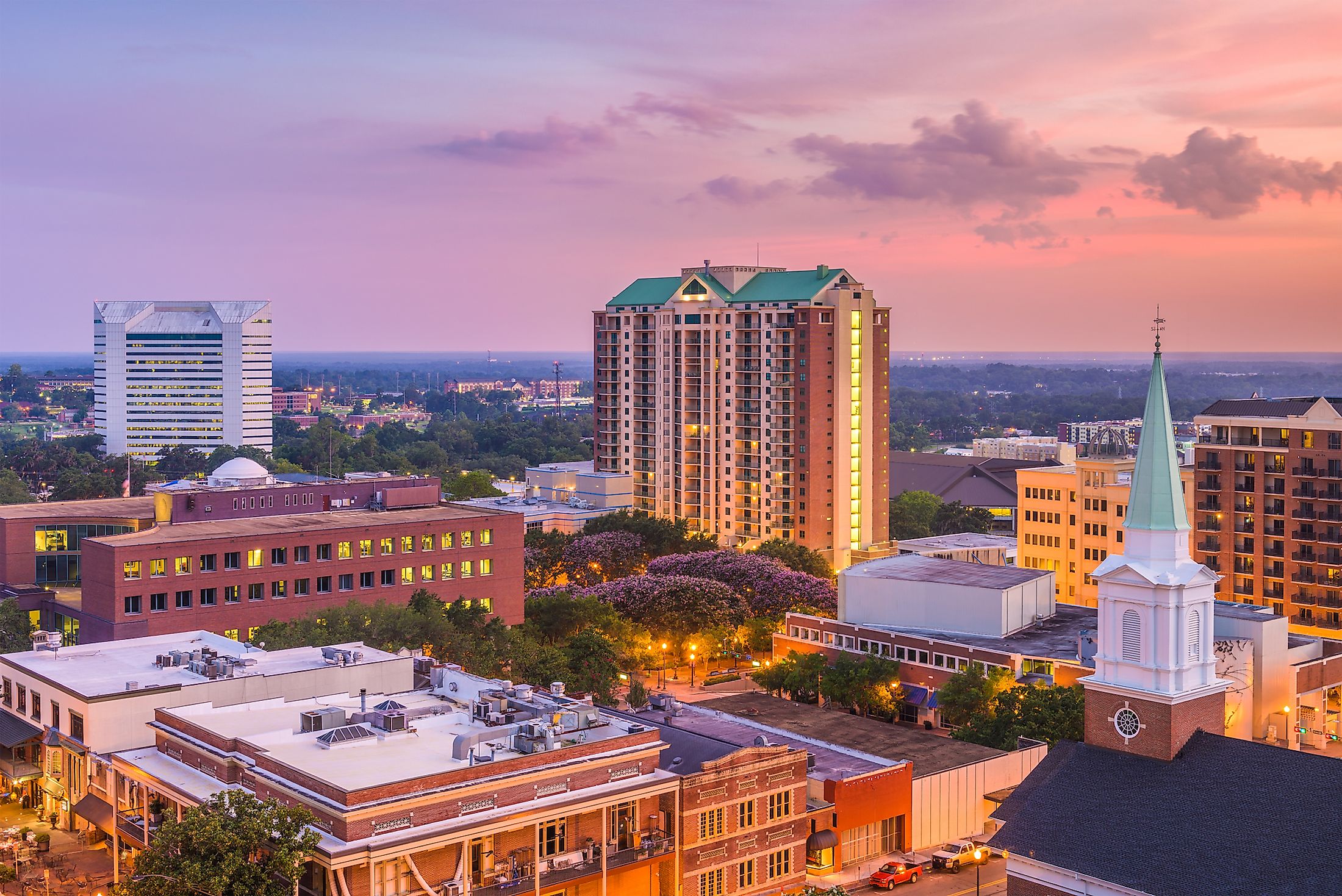
Tallahassee, Capital Of Florida
Tallahassee is a large city situated in Leon County at the heart of the northern panhandle region of the US State of Florida. Tallahassee is Florida's capital city as well as the largest city in both the Panhandle and Big Bend regions of the state. It is also the country's 126th biggest city and the 8th largest city in the state. Being home to Florida's administrative headquarters, many prestigious universities, and the National High Magnetic Field Laboratory, Tallahassee serves as an educational hub and the state's regional scientific research center.
Geography Of Tallahassee
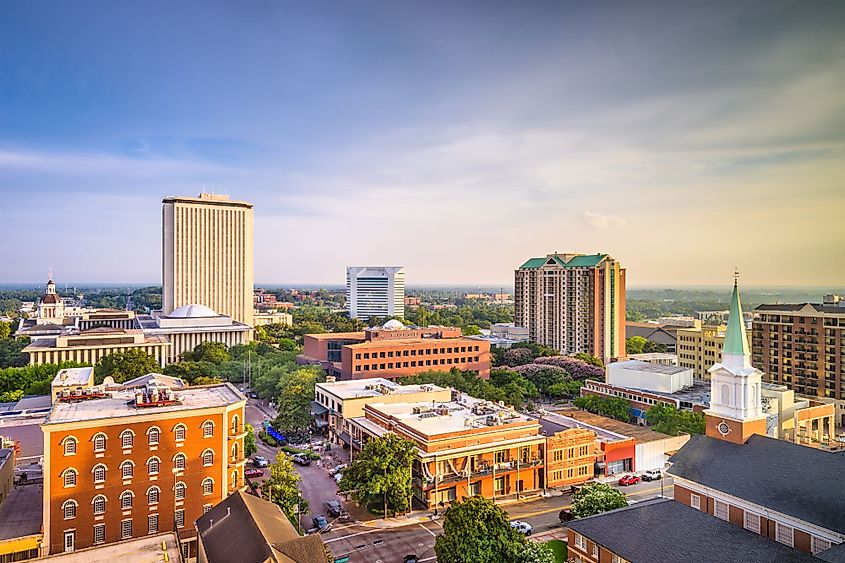
Tallahassee covers a total area of 254.3 sq. km, of which 247.9 sq. km is occupied by land, and 6.5 sq. km is occupied by water. The city has a hilly terrain due to its location just above the Cody Escarpment at the southern edge of the Red Hills Region. The city's elevation varies from near sea level to more than 61m, with the State Capitol being located on one of the city's highest hills. Tallahassee also surrounds the northern end of the Apalachicola National Forest and contains two large lake basins: Lake Lafayette and Lake Jackson, within the city's borders. The city features several palm, pines, oaks, and magnolia trees. Tallahassee contains many neighborhoods, among which All Saints, Betton Hills, Frenchtown, Killearn Estates, Apalachee Ridge, Southwood are most notable. The city also includes many gated communities such as Lafayette Oaks, Golden Eagle, Ox Bottom, etc.
Climate
According to the Köppen climate classification, Tallahassee experiences a humid subtropical climate with long, hot summers and short, cold winters. The hot summer season lasts from mid-may to the end-September, where July being the hottest month, has a high temperature of 32.7°C and a low temperature of 22.2°C. Tallahassee is one of the few Floridian cities to often record temperatures more than 37.8°C during summers. Afternoon showers and thunderstorms also characterize the summer months. The cold winter season lasts from December to February, where January is the coldest month, with an average low temperature of 5°C and a high temperature of 17.7°C. Tallahassee receives an average precipitation of 58.81 inches per year.
The Population And Economy Of Tallahassee

As of 2019, Tallahassee is home to a population of 191,279 inhabitants with a median age of 26.9. The city's population has increased from the previous census, which showed that the city was home to 181,376 inhabitants. About 8.09% of residents of Tallahassee were born outside the United States, their most common birthplace being Cuba, followed by Haiti and Colombia. The largest ethnic groups in Tallahassee include the non-Hispanic White representing 51.11% of the city's population, African Americans at 34.5%, Hispanic White at 5.17%, Asians at 4.52%, two and more races at 2.6%. About 92% of Tallahassee's residents speak English as their first language, while a few residents speak Spanish, French, and German.
The median household income in Tallahassee is $45,734, and the median property value is $203,800. The majority of the residents of Tallahassee drove alone to work, and the average car ownership in the city was two cars per household. The economy of Tallahassee employs 98,900 people in various high-paying industries such as Educational Services, Public Administration, Health Care & Social Assistance. The largest universities in Tallahassee include Florida State University, Tallahassee Community College, and Florida Agricultural & Mechanical University.
Tourist Attractions In Tallahassee
Railroad Square Art District
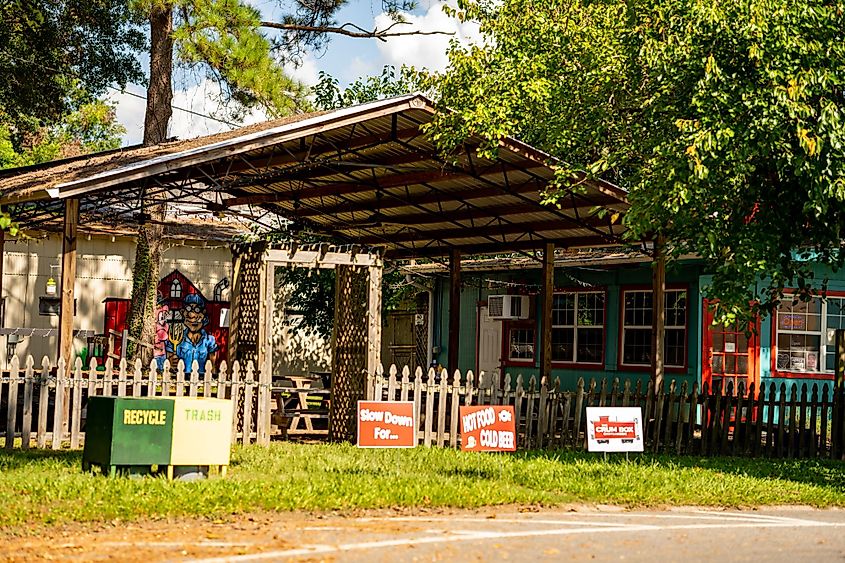
Located off Railroad Avenue in Tallahassee, the Railroad Square Art District is the city's art, entertainment, and cultural district. Railroad Square is mostly well known for its artist studios, local shops selling artworks and souvenirs, and exhibition of metal art sculptures. The large variety of shops, brightly colored buildings, murals, and outdoor sculptures make Railroad Square one of the most popular attractions in Tallahassee. The Railroad Square hosts an art crawl event named "First Friday" on the first Friday of every month with food trucks and live musical performances.
Museum of Florida History
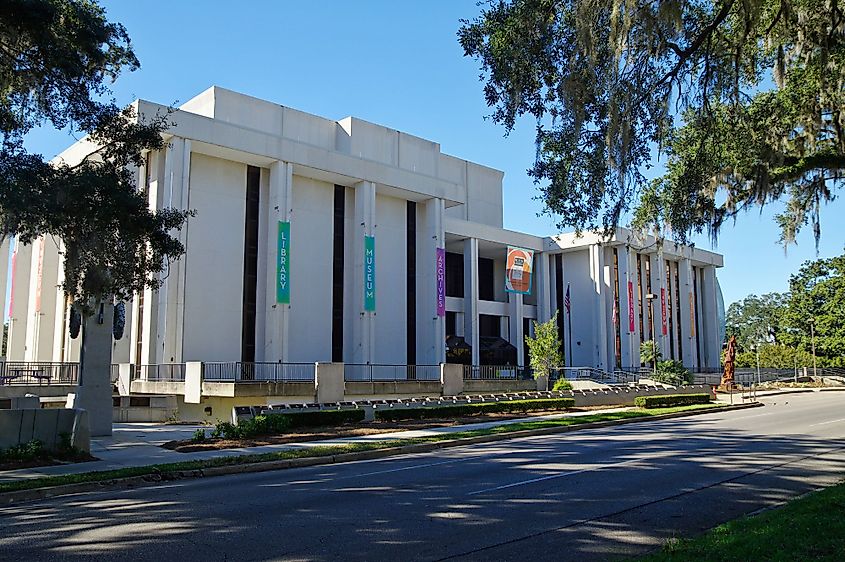
The Museum of Florida History is located at 500 South Bronough Street at the R.A. Gray Building in Tallahassee. The museum displays various artifacts that tell stories about the rich history of Florida. The museum mainly focuses on artifacts and eras unique to Florida's development and the crucial role the state residents have played in national and international events. Established in 1977, the Museum of Florida History is currently managed by the Florida Division of Cultural Affairs.
Brief History Of Tallahassee
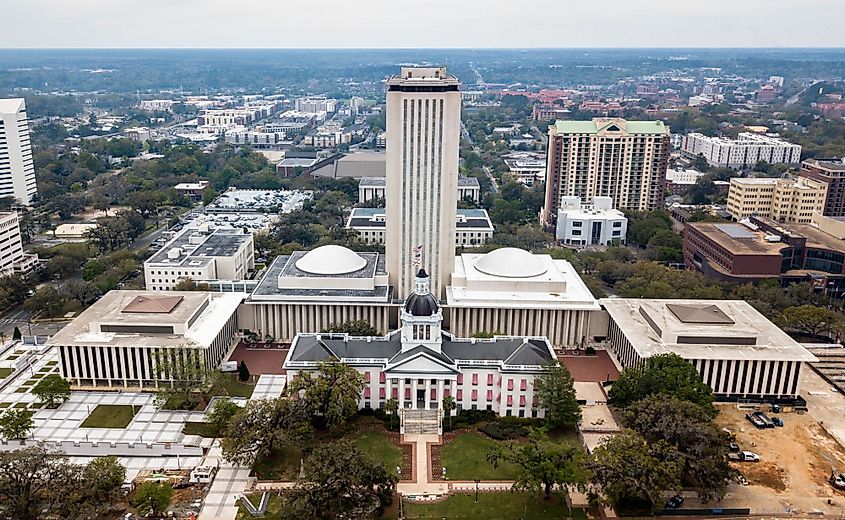
It is believed that indigenous people inhabited the area for several years before the arrival of the Europeans. Several large earthwork mounds built by people belonging to the Mississippian culture around 1200CE have been found close to Lake Jackson. During his mid-16th century, the Spanish explorer Hernando de Soto camped at the Apalachee town of Anhaica, which is the modern-day Tallahassee. The name Tallahassee in the native Muskogean language means "old town" and is a reference to the Creek people who relocated to the region in the late 18th and the beginning of the 19th century from Georgia and Alabama. In September 1821, Florida became an American territory. Tallahassee was chosen as the state capital due to its location halfway between St. Augustine (the former capital of East Florida) and Pensacola (the former capital of West Florida). From 1821 onwards, Tallahassee gradually developed as a town. The US Congress granted a land grant of 93 sq. km area to French hero of American Revolution - Marquis de Lafayette in 1824. Tallahassee also served as a center of the slave trade and the heart of the Cotton Belt of Florida. During the American Civil War, Tallahassee remained the sole Confederate state capital located east of the Mississippi River that was not burned or conquered by the Union troops. After the establishment of many renowned institutions, including Florida State University, the city transformed into a university town. At present, Tallahassee serves as a trade and distribution point for the adjacent agricultural region.











